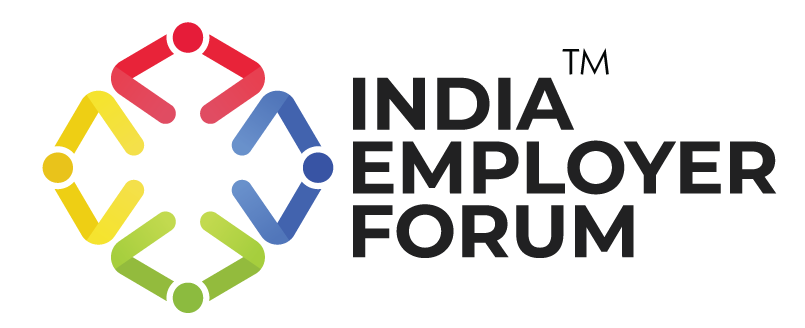We often encounter discussions in various HR-led forums about the “skills gap” in the labour market. The gap refers to the discrepancy between employees’ skills and those that the employers seek. This is one of the primary reasons for unfilled positions and high unemployment rates. This article delves into the root causes, implications, and possible methods to bridge this gap based on academic and industry data.
Analysing the Causes of Skills Gap
Technological advancements: The main factor for the skills gap is rapid technological development. As industries change, the demand for workers who can use new technologies increases. According to the World Economic Forum (2020), the Fourth Industrial Revolution has brought automation, artificial intelligence, and digitalisation in various industries, which has led to demand for a skilled workforce in these areas. The current educational systems and training programs fall short in equipping students and employees with the necessary skills to be successful in the new world of work.
Educational discrepancies: Another reason, after analysing the skill gap, is the mismatch between academic learning outcomes and the current skills needed in the job market. Carnevale et al. (2018) argued that traditional education systems emphasised theoretical knowledge over practical competencies. Due to the lack of hands-on work experience, graduates are unprepared to tackle the workforce challenges they face in real-world work contexts. This discrepancy between academic programs and industry requirements results in graduates with advanced degrees lacking relevant, contemporary, employable skills.
Impact on job seekers
Unemployment and underemployment: The skill gap is leading to the rise of unemployment and under-employment. Due to the lack of required skills, the positions are not successfully filled, affecting both prospective candidates and employers. Although ample employment opportunities exist, candidates lack the specific skill sets employers require. How long can a qualified professional remain without employment? Finally, they compromise by accepting lower-level jobs despite being overqualified and accept lower wages, leading them to face professional and personal challenges. (Feldman, 2021).
Training and retraining costs: The job market demands that job seekers be tech-savvy and possess contemporary skills and technical abilities. This requires job seekers to invest in additional training to bridge the skill gap and align with the expectations of employers. However, this can be both a costly and time-consuming endeavour. We must recognise that while India has made significant progress, only a few are born with privilege. Most job seekers in the Indian labour market may already be facing financial challenges due to unemployment. Furthermore, navigating the vast array of upskilling programs and certifications can be overwhelming. The burden of preparing for the future through additional training beyond their three- or four-year degree programs makes it even more complex for job seekers to identify the most effective pathways to enhance their employability (Bessen, 2019).
Impact on Employers
Talent shortages: As employers encounter difficulty in filling open positions due to skill gaps, they are unable to expand. This impacts business growth and innovation in the organisation. According to the Society for Human Resource Management (2021), nearly three-fourths (75%) of HR managers face difficulty in finding the right talent due to a lack of necessary skills. This ultimately results in increased recruitment costs and delayed project timelines.
Increased training costs: Many organisations invest in their existing staff by seeking to upskill them and thus address the skills gap. While this strategy effectively builds internal talent pools, it incurs substantial costs. Training, mentorship programs, and continuous customised learning initiatives require employers to provide financial resources, which constrain funds for other business purposes. (Cappelli, 2014)
Potential solutions
Collaboration between education and industry: Collaboration between educational institutions and industry is one of the most strategic ways to bridge the skills gap. Business schools and industries are working together to develop curricula that align with current and future market needs. For example, vocational training programs and apprenticeships provide students with hands-on experience and practical skills, making them more attractive to employers upon graduation (Symonds et al., 2011).
Lifelong learning and continuous development: The present scenario demands consistent adaptation to the dynamic labour market. Therefore, promoting a lifelong learning culture is a prerequisite for job seekers and employers to align with industry trends. Employees are expected to be proactive learners and stay competitive. On the other hand, employers contribute by conducting a relentless continuous training program, encouraging employees to return to school, and demonstrating their respect for and commitment to continuous professional development (Brown et al., 2017).
Leveraging technology for training: Technology is a game changer that addresses the skills gap in various industries. Online learning platforms, virtual simulations, and interactive training modules for job seekers and employees provide accessible and flexible learning opportunities. By leveraging technology, individuals acquire new skills. At the same time, employers use it to present training programs to a broader audience to offer scalable, cost-effective training solutions (Lavi, 2020).
Conclusion
An organisation’s success depends on the job seekers’ quality of skills; a gap may, therefore, impact business growth and economic stability. It is thus imperative to address this issue, which may require attention in a multifaceted approach. Thus, collaboration between education and industry, a commitment to lifelong learning, and technology integration into training initiatives can help fix the skill gap. These techniques may build a strong bridge over the skill gaps, creating a robust, resilient, and future-focused, adaptable workforce.
References:
- AI and Jobs: The Role of Demand | SSRN Electronic Journal | 2019
- The Global Auction: The Broken Promises of Education, Jobs, and Incomes | Oxford University Press | 2017
- Skill Gaps, Skill Shortages, and Skill Mismatches: Evidence and Arguments for the United States | NBER | 2014
- America’s Divided Recovery: College Haves and Have-Nots | Georgetown University Center on Education and the Workforce | 2018
- The Road to Underemployment: A Longitudinal Perspective on Overqualification | Helion | 2023
- The Role of Online Learning in Bridging the Skills Gap | SEEJPH | 2024
- The Skills Gap 2021 | SHRM | 2021
- Pathways to Prosperity: Meeting the Challenge of Preparing Young Americans for the 21st Century | Harvard Graduate School of Education | 2011
- The Future of Jobs Report 2020 | World Economic Forum | 2020






